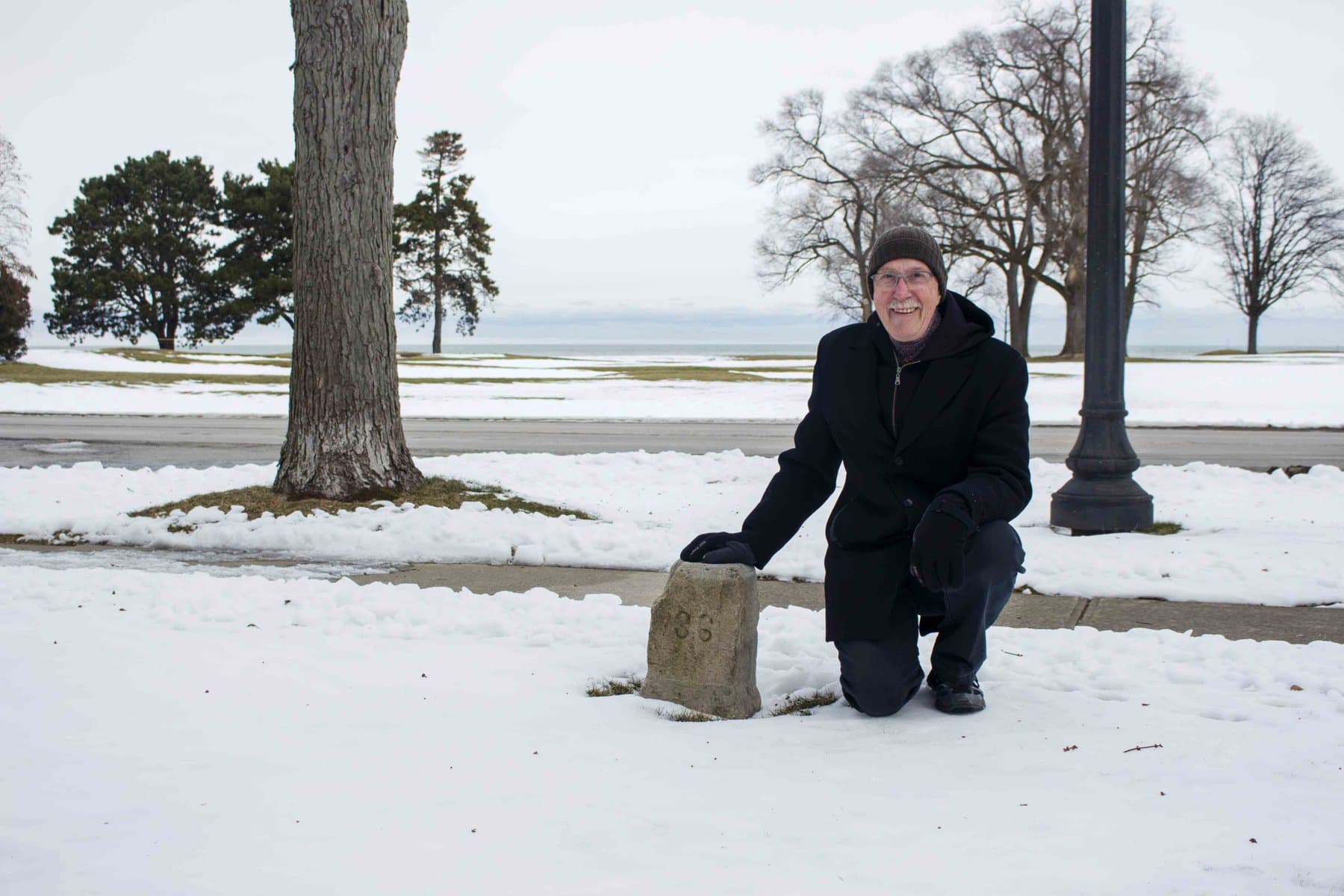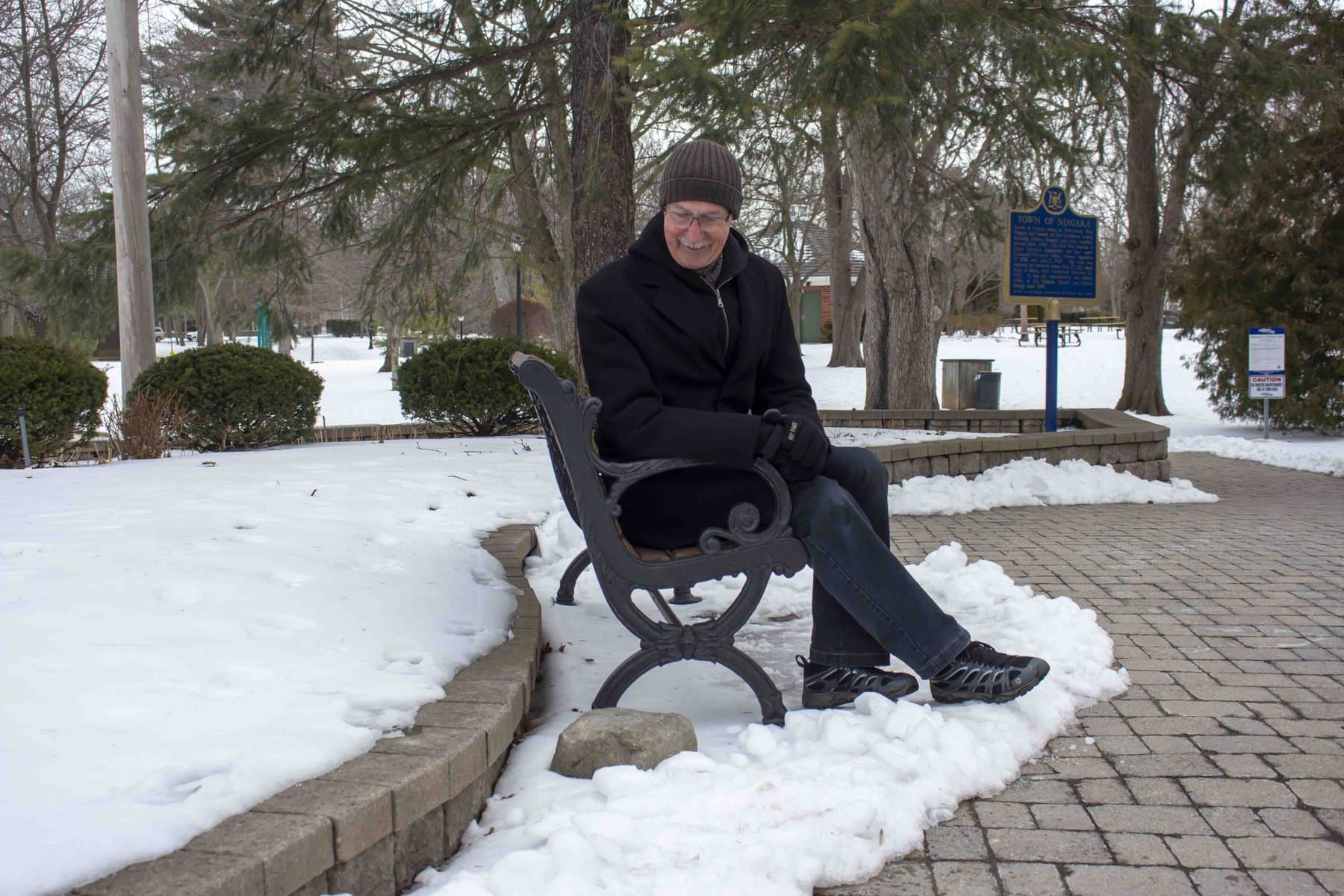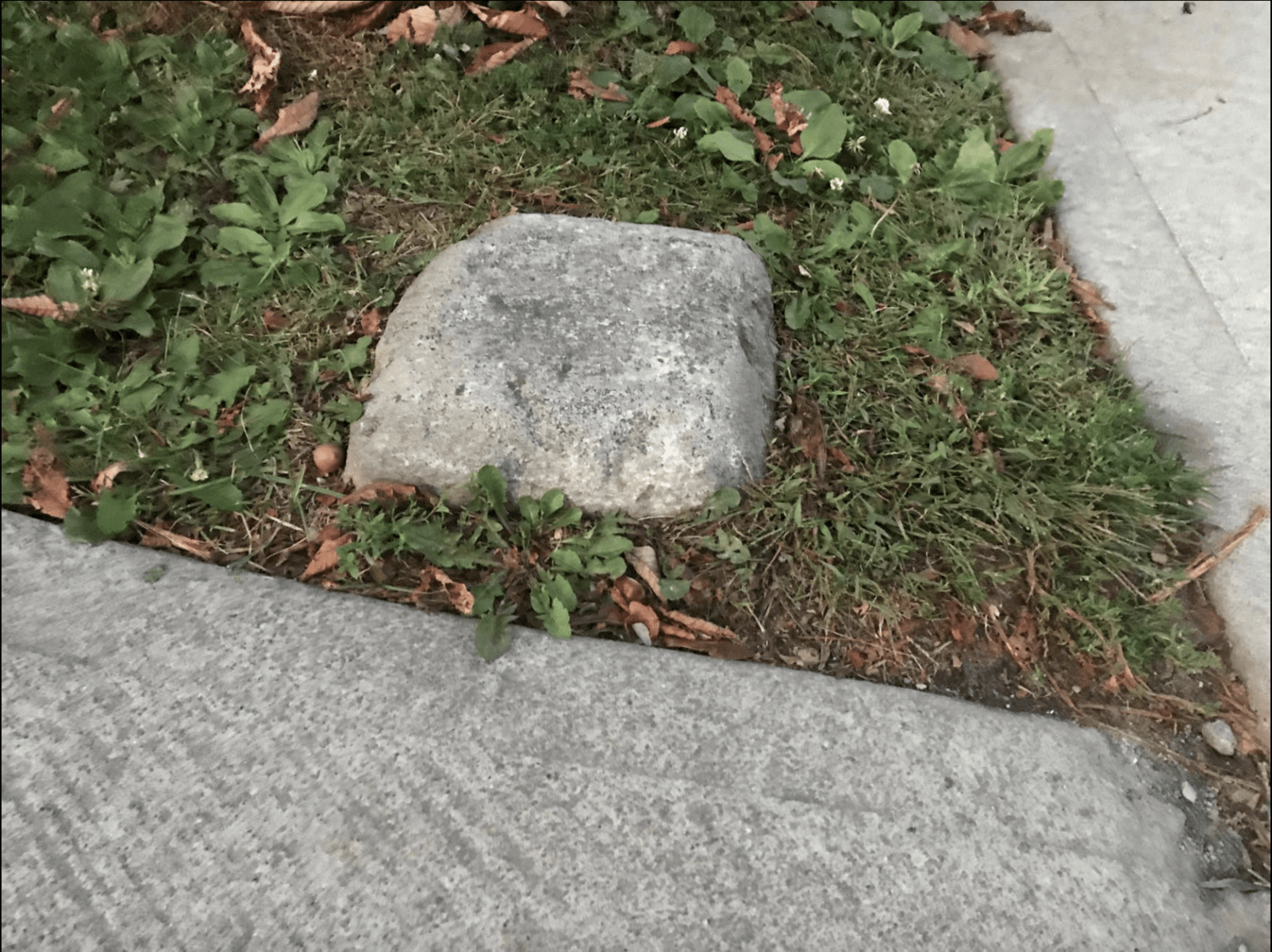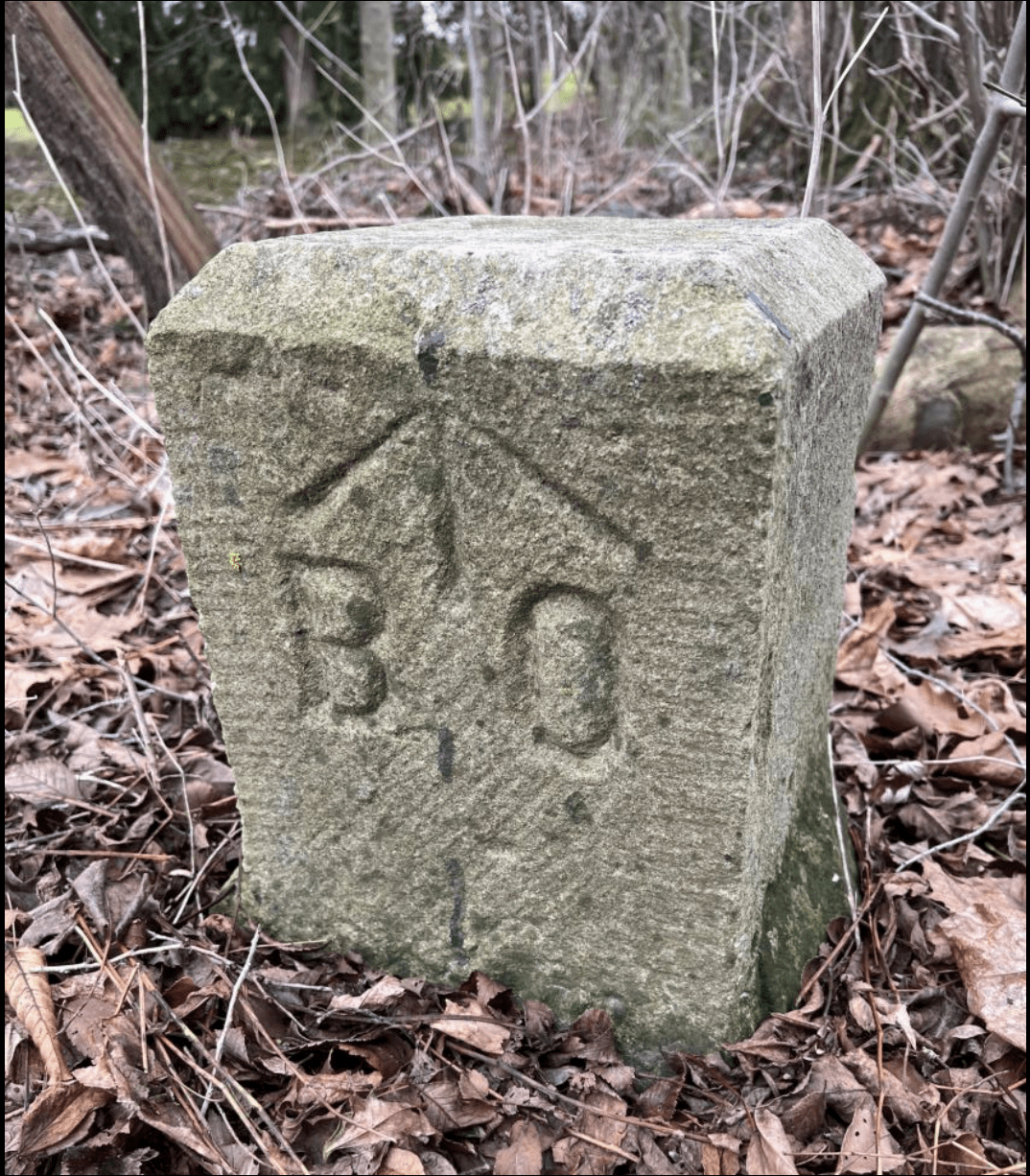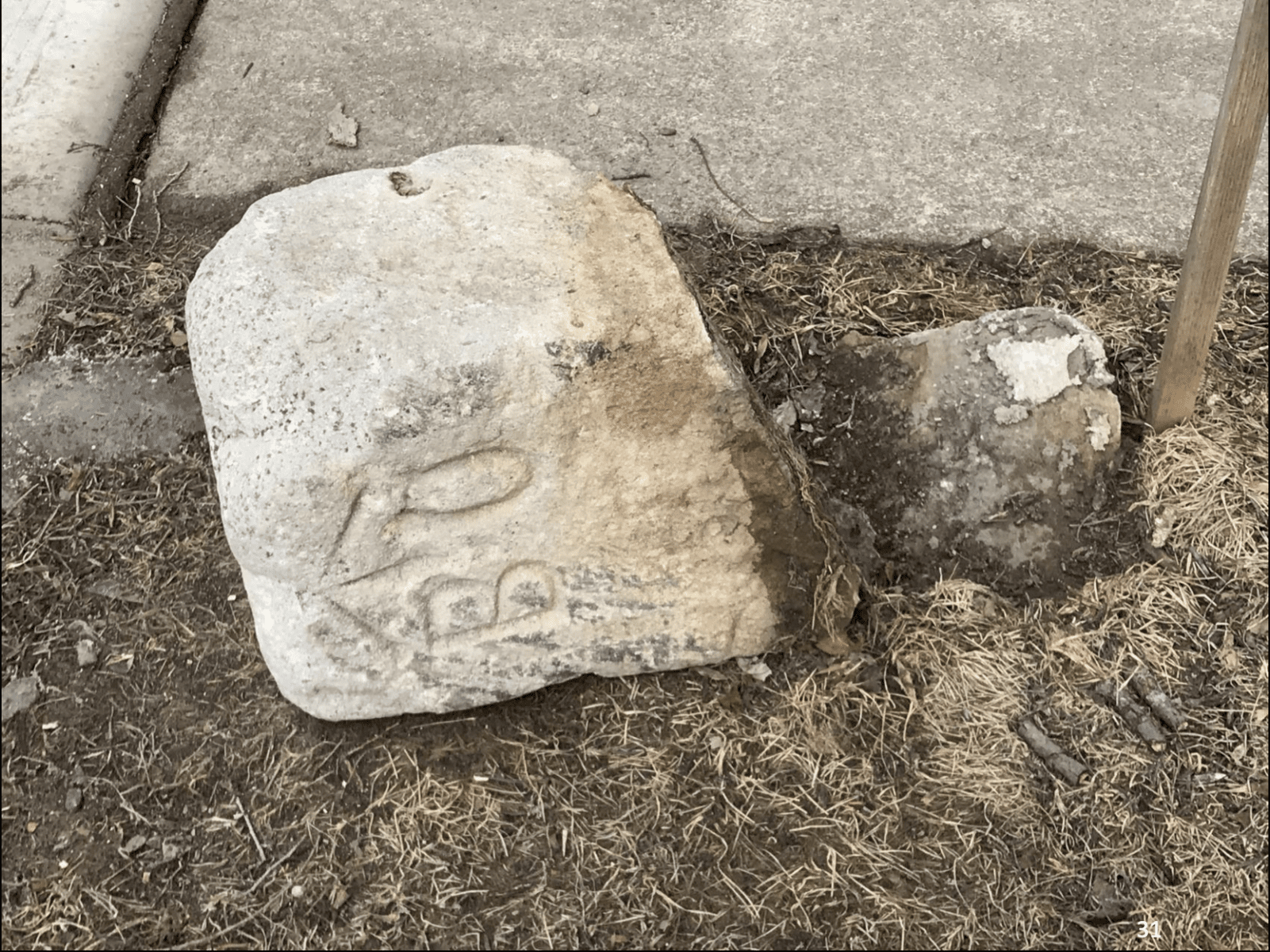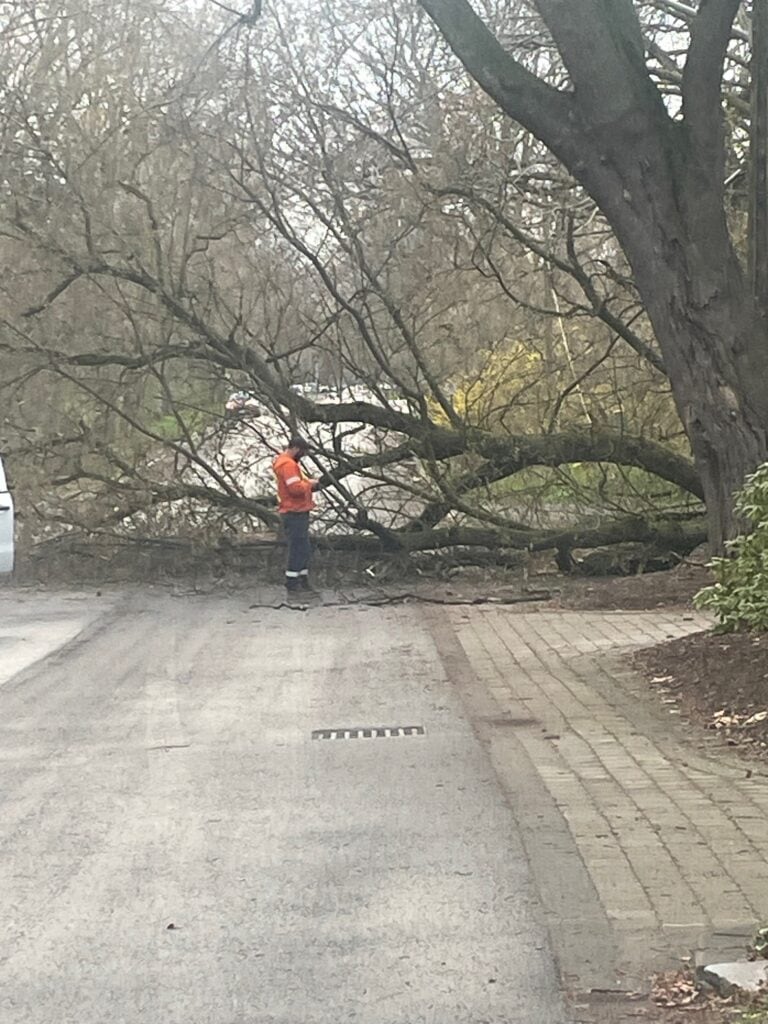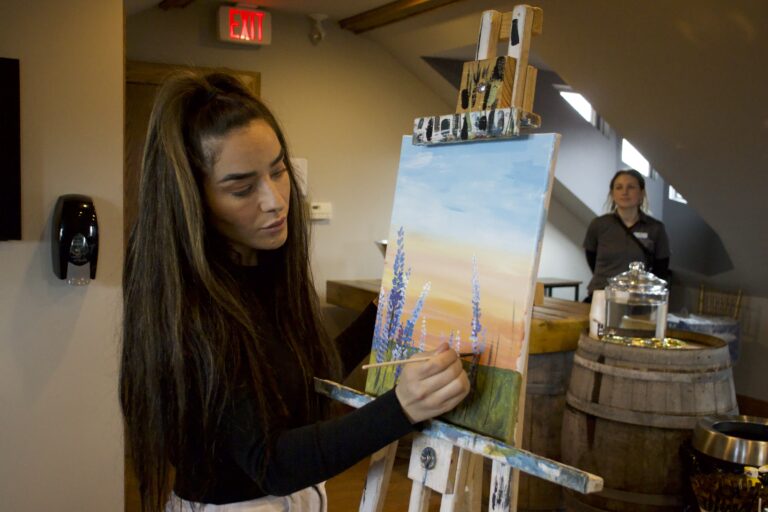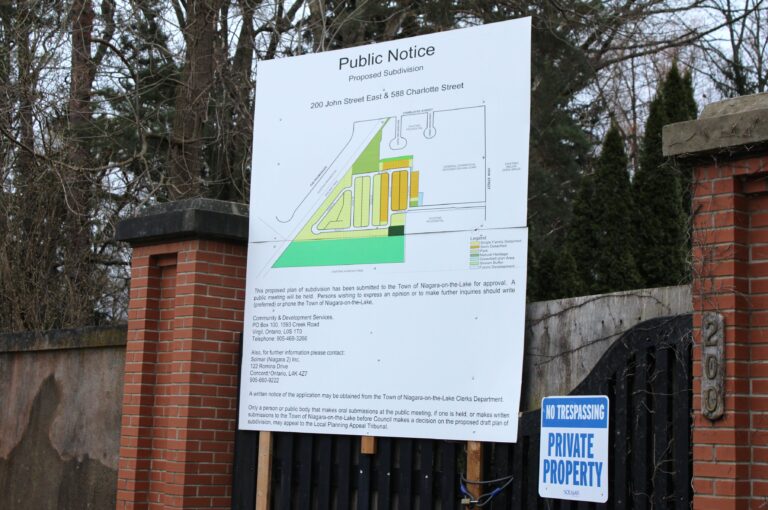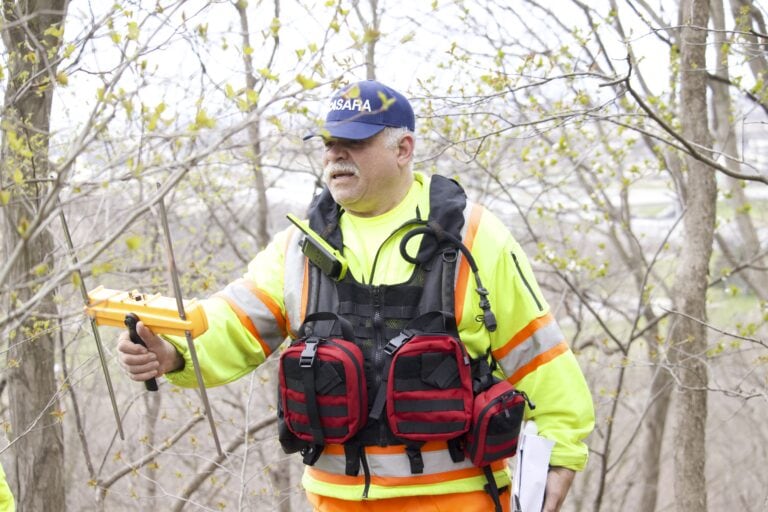One man’s quest to restore Niagara-on-the-Lake’s oldest rock collection could be a new history-focused tourist attraction for the town by summer’s end.
Ted Rumble, a member of the NOTL Museum’s board, has been trying to get the town’s ordnance boundary stones restored and protected for the last four years.
He has gained some traction with NOTL councillors who referred the proposal to town staff for a report on costs of restoring them.
In his research, Rumble learned the stones played an important role in shaping the town’s future.
The stones are marked with the initials “BO” and an arrow pointing upward.
Those letters stand for Board of Ordnance, which was the British Crown’s custodian of military property from 1687 to 1855, Rumble told councillors.
“It was the second biggest department of the British government after the treasury. It was very powerful.”
The stones were used in the 19th century to mark the boundaries of military property.
Rumble said there were “severe penalties” for anyone caught “interfering” with those properties.
Lord Mayor Gary Zalepa said he wants to see a budget report on the proposal before making any commitments.
Council voted unanimously to instruct staff to assess the cost of the restoration work and include it in the 2023 budget discussions.
Rumble first brought the history of the ordnance boundary stones to the attention of the previous council three years ago.
“They found it fascinating three years ago. None of them had ever heard of them before,” he said.
At that time, council decided to have the municipal heritage committee investigate the stones for their heritage value, Rumble said.
But then the pandemic came along and “it all got forgotten,” he said.
“For us to allow them to get broken or to sink underground, or to be ignored, I think is a travesty,” Rumble told The Lake Report in an interview.
Rumble said he first developed an interest in the stones after one was broken outside his home, at Simcoe and Prideaux streets.
He decided then that he’d look them up online and “see what the story is.”
He found little at first and even the NOTL Museum had not done much research on them.
“I just found the story became more and more fascinating as time went on,” Rumble said.
In NOTL, the stones mark four historic military properties.
They include the Garrison Reserve (known today as the Commons), the Mississauga Reserve (now Queen’s Royal Park), Vacant Town Lot A (now Simcoe Park) and the “hospital block,” (which is covered by the houses between Queen, Nassau, Dorchester and Johnson streets).
Some of those sites are now NOTL’s most famous parks and greenspaces.
So far, 17 of the boundary stones have been found throughout Old Town, but Rumble said historical records show there once were 37.
Still, with 17, NOTL has the world’s largest collection of these stones, he said.
“In the past 197 years these stones have been relatively untouched until the advent of motorized equipment,” Rumble said.
Many of the stones have sunk into the ground over time or have been damaged by snow removal and construction equipment.
“Nothing has been done to protect these stones,” he said.
Three of them have been damaged since Rumble’s first presentation three years ago.
The stones are made of white limestone from the Queenston quarry and are cut to about 9 inches square and are about a foot tall, he added.
Rumble wants the town to take steps to preserve them this summer in commemoration of their 200th anniversary.
The stones “present an authentic story of the early days of our town,” he said.
“Restoring the stones means repositioning them up to their original height,” he said.
It would also require installing a barrier to protect them from damage caused by snow plows.
Rumble said there are two in Queenston but they don’t require as much attention.
“They are set aside, they’re remote. They’re not at risk of damage,” he said.
Councillors were enthusiastic about the project.
“I’m very supportive of having something done here,” Zalepa said.
“I think it’s really important – 200 years is quite significant,” he added.
Coun. Erwin Wiens wondered whether Rumble had a budget in mind for the project but Rumble said he did not know the cost of restoring them.
However, he said there would be no ongoing cost to maintain them for the next 200 years.
Restoring the stones “will be a legacy of this council,” he said.
Coun. Sandra O’Connor suggested, “This will fit right in with our tourism strategy” and in an interview with The Lake Report, Rumble agreed.
“It strikes me that there are opportunities here. Tourists, you know, they love history in Niagara-on-the-Lake,” he said.
Rumble said he has been asked many times about doing a walking tour involving the stones, but thinks the distance might be too long for a trek on foot.
He suggested perhaps a bicycle tour instead.



